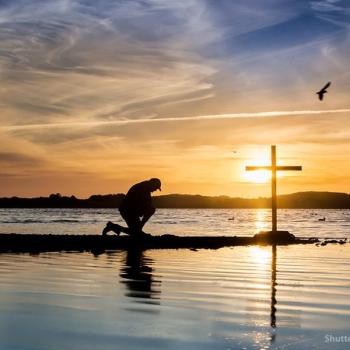
Babylon in Brussels?
In June 2016, I organized a meeting for the local churches in an English town to discuss the forthcoming referendum on the UK’s membership in the European Union. It was well attended, drawing in participants across the denominations.
The evening was lively. An animated minority discussed whether the statue of ‘Europa and the Bull’ in the European district of Brussels reveals the pagan origins of the EU; whether the EU parliament building in Strasbourg is modeled on the Tower of Babel; and asserted that the EU is a fulfillment of prophecies in Daniel and Revelation and a tool of Antichrist in advance of the second coming of Christ. This mood in that meeting was far from unique.
The end times in the USA
My experience in the UK was not the only momentous event of 2016. In November, Donald Trump was elected president. About 33 million white evangelicals voted for Trump, and many – as in the UK and globally – see contemporary events through a particular form of eschatology. This support has had significant effects on US policy.
Trump’s decisions to move the US embassy to Jerusalem (2018) and support Israeli sovereignty over the Golan Heights (2019) were designed to appeal to American evangelical Christians. Polling in the USA in 2017 revealed that 80% of evangelicals believe that the creation of Israel was a fulfillment of prophecy that will bring about Christ’s second coming.
In a related move, Trump’s decision to leave the Paris climate agreement in 2017 (implemented in 2020) sat easily with many who deny the reality of climate change caused by human action; or do not consider it a threat that can be averted by human agency.
Whatever one feels about these geopolitical and environmental issues, it is undeniable that huge numbers of people in the USA see these decisions through an end-times lens.
The End Times, Again?
This caused me to write a book exploring the history of end-times beliefs. It is titled: The End Times, Again? 2000 Years of the Use and Misuse of Biblical Prophecy.
Christianity inherited from Judaism a belief in prophecy. The gospels reveal this both in the belief that the life of Jesus is foretold in Old Testament prophecy and in adding to the prophetic tradition by predicting the future return of Jesus (the ‘second coming’).
What is clear is that there was (and is) a creative tension between the Christian hope in the second coming and scriptural warnings that nobody knows the time it will occur (Matthew 24:36, Acts 1:7). This should have given pause for thought to later believers, but it hasn’t. However, it has been a complex journey through two millennia.
An outlook developed, over the first four centuries of the Christian era, known as “supersessionism,” or “replacement theology.” This held that the ‘new covenant,’ based on faith in Jesus, replaced the ‘old covenant,’ between God and the Jews. According to this understanding, the church became the focus of prophecies referring to the Jewish people. It also accompanied the increased reading of end-times scripture as symbolic and allegorical. By the end of the Roman Empire in the West, the official end-times mood had changed significantly. Literal and predictive interpretation of prophecy – once the dominant orthodoxy – increasingly became associated with fringe movements, even with heresy.
This did not stop people from speculating. Tenth-century commentators named raiding Magyars and Vikings as fulfilments of prophecy. End-times excitement and anxiety mounted as the Year 1000 approached.
This accelerated during the Crusades when Islamic armies were identified as end-times actors and Jews were slaughtered in Rhineland cities. Later, medieval popes and emperors quarried prophetic scripture for accusations to throw at each other (usually the accusation of being Antichrist).
At the Reformation, many Protestants rejected official Catholic views of prophecy as allegorical, sure they lived in the ‘last days’ – with the pope being Antichrist. Radical Anabaptists established ‘New Jerusalems’ in anticipation of the second coming. As Britain spiraled into civil wars in the 1640s, eschatological excitement increased, only to be dashed when the monarchy was restored in 1660.
The same outlook was taken to New England, entering the cultural DNA of what became the USA. In the nineteenth century, the idea emerged of ‘the rapture,’ the belief that the ‘true church’ will be removed from the earth shortly before a time of ‘great tribulation’ preceding the return of Christ.
In the twentieth century, the establishment of the State of Israel and the Cold War galvanized prophetic study – especially in the USA – with many Christians identifying Israel as a fulfillment of end-times prophecy. For some, in the Cold War, eschatology justified opposition to nuclear disarmament. The prophecy was interpreted in ways that were in line with Cold War outlooks and Western perspectives. As this occurred, end-times beliefs increasingly became associated with the political right. This is by no means inevitable, but it often continues to be the case.
The ‘end times’ are ‘now times’?
Since 2020, the pandemic has led to claims that it has end-times significance. Anti-vaxxers have included some who identify vaccination as part of an emerging Antichrist international order. This has been amplified by conspiracy theory-culture and social-media algorithms.
In the face of an imminent end-time, the urgent need to address climate change can be presented as irrelevant. After all, if the second coming is close, there is little urgency. Indeed, the climate threat may be part of an end-times judgment.
These beliefs are highly significant because, in an increasingly polarized political climate, the way they are being deployed impacts on elections. This is especially so in the USA, where evangelicals (even through reducing in numbers) punch well above their weight due to the extent of their ideological homogeneity and turnout. And many globally are influenced by ideas that originate in the USA.
Today, a particular way of interpreting prophecy is more politically influential than at any time since the Cold War. This is driving much of the worldview of the Christian’ evangelical right.’ It is important that this is recognized in order to discuss this subject with and within the Christian community. Recognition does not imply agreement with this way of interpreting scripture. However, ignoring it, or simply dismissing it, may prove to be a major error.














